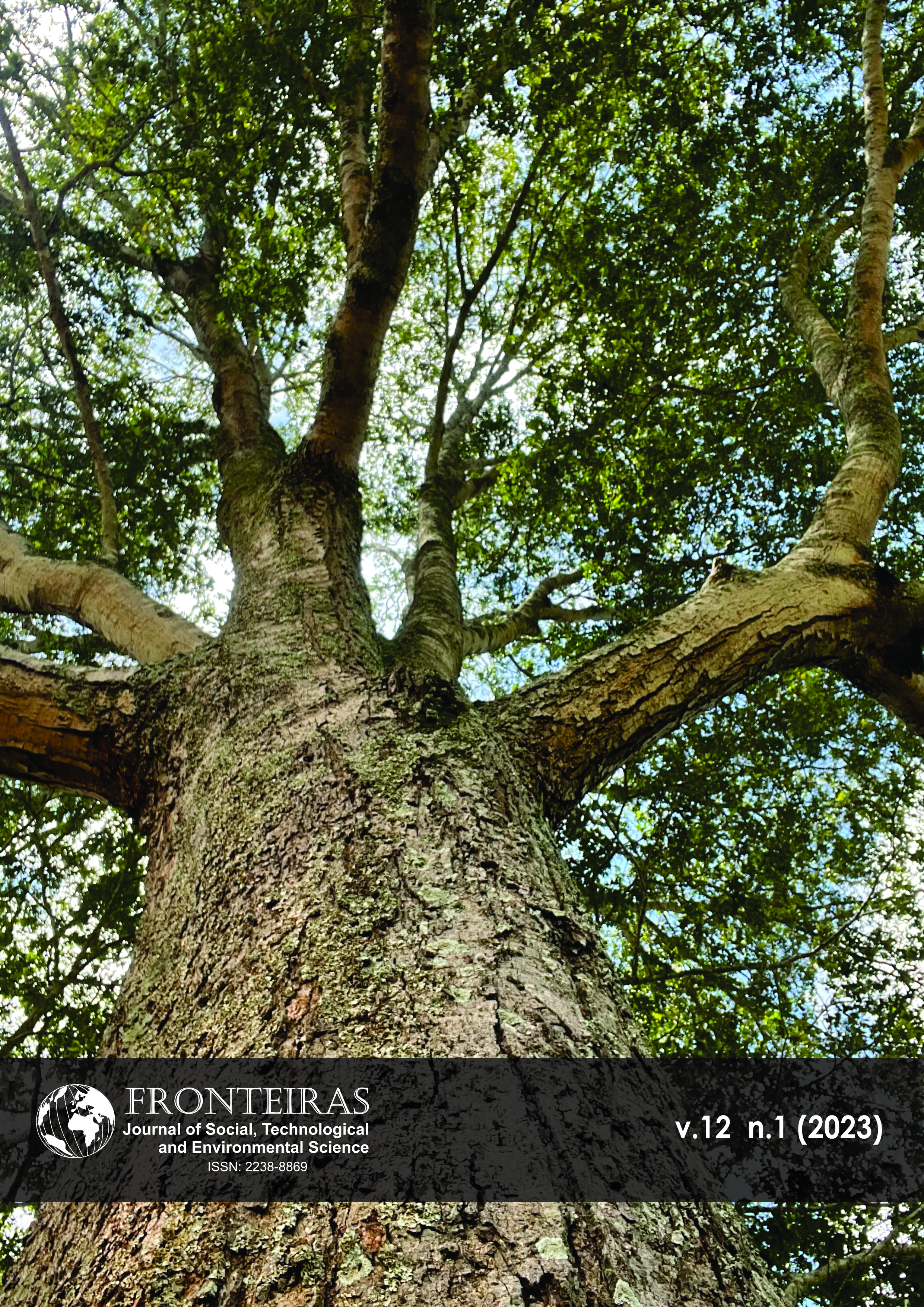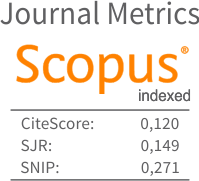Factors Affecting Nest Site Selection by Freshwater Turtles: A Systematic Review
DOI:
https://doi.org/10.21664/2238-8869.2023v12i1.p183-198Palavras-chave:
quelônio, testudine, seleção de habitat, desova, oviposiçãoResumo
A seleção do local de nidificação é um comportamento importante, particularmente em espécies que carecem de cuidados parentais, pois o microclima do ninho pode ter grande impacto na sobrevivência dos embriões e no fenótipo dos filhotes. Compreender quais fatores influenciam as decisões sobre a oviposição é fundamental para identificar áreas prioritárias para a conservação. Esta revisão sistemática visa sintetizar os fatores que afetam a seleção do local de nidificação pelas tartarugas de água doce. A pesquisa foi conduzida no banco de dados da Web of Science. No total, 35 publicações preencheram os critérios de elegibilidade. O primeiro estudo sobre o tema foi publicado há mais de três décadas, mas somente nos últimos dez anos os estudos começaram a ser publicados anualmente. Mais da metade dos estudos foi realizada nos Estados Unidos e a espécie mais estudada foi Chrysemys picta. Os fatores ambientais, principalmente as características da vegetação, mas também as propriedades do solo e a morfologia da praia, são os mais estudados. Fatores antrópicos têm sido cada vez mais estudados, especialmente áreas residenciais e campos agrícolas. Alguns estudos sugerem que habitats alterados pelo homem podem atuar como armadilhas ecológicas, enfatizando a necessidade de mais pesquisas sobre este tópico. Mais estudos também são necessários sobre a influência do risco de predação, pistas de indivíduos da mesma espécie, tamanho da fêmea e fenótipo dos filhotes na seleção do local de nidificação pelas tartarugas de água doce. Destacamos que a compreensão dos fatores que afetam a seleção do local de nidificação é importante para identificar as necessidades de habitat das fêmeas de nidificação, prever possíveis implicações ecológicas da escolha do local de nidificação, avaliar o potencial adaptativo das espécies às mudanças ambientais e determinar a vulnerabilidade das populações a diferentes ameaças.
Referências
Bramer WM, Rethlefsen ML, Kleijnen J, Franco OH 2017. Optimal database combinations for literature searches in systematic reviews: A prospective exploratory study. Systematic Reviews 6:1–12.
Byer NW, Reid BN, Peery MZ 2019. Implications of slow pace-of-life for nesting behavior in an armored ectotherm. Behavioral Ecology and Sociobiology 73:47.
Castro PTA, Ferreira Júnior PD 2008. Caracterização ecogeomorfológica das áreas de desova de quelônios de água doce (gênero Podocnemis) no entorno da Ilha do Bananal, Rio Araguaia. Geografias 4:15–22.
Cavacini A 2015. What is the best database for computer science journal articles? Scientometrics 102:2059–2071.
Congdon JD, Pappas MJ, Krenz JD, Brecke BJ, Schlenner M 2015. Compass orientation during dispersal of freshwater hatchling Snapping turtles (Chelydra serpentina) and Blanding’s turtles (Emydoidea blandingii). Ethology 121:538–547.
Czaja RA, Scholz AL, Figueras MP, Burke RL 2020. The role of nest depth and site choice in mitigating the effects of climate change on an oviparous reptile. Diversity 12:151.
Delaney DM, Janzen FJ 2018. Offspring dispersal ability covaries with nest-site choice. Behavioral Ecology 30:125–133.
Delaney DM, Janzen FJ 2020. Risk-sensitive maternal investment: an evaluation of parent–offspring conflict over nest site choice in the wild. Animal Behaviour 163:105–113.
Doody JS, West P, Georges A 2003. Beach selection in nesting Pig-nosed turtles, Carettochelys insculpta. Journal of Herpetology 37:178–182.
Erickson J, Farias IP, Zuanon J 2020. The life history of the Yellow-spotted Amazon river turtle (Podocnemis unifilis) as told from the nests. Salamandra 56:296–308.
Escalona T, Valenzuela N, Adams DC 2009. Nesting ecology in the freshwater turtle Podocnemis unifilis: Spatiotemporal patterns and inferred explanations. Functional Ecology 23:826–835.
Foley SM, Price SJ, Dorcas ME 2012. Nest-site selection and nest depredation of semi-aquatic turtles on golf courses. Urban Ecosystems 15:489–497.
Freedberg S, Lee C, Pappas M 2011. Agricultural practices alter sex ratios in a reptile with environmental sex determination. Biological Conservation 144:1159–1166.
Hughes EJ, Brooks RJ 2006. The good mother: Does nest-site selection constitute parental investment in turtles? Canadian Journal of Zoology 84:1545–1554.
Hughes GN, Greaves WF, Litzgus JD 2009. Nest-site selection by Wood turtles (Glyptemys insculpta) in a thermally limited environment. Northeastern Naturalist 16:321–338.
Iverson JB, Klondaris H, Angell CS, Tori WP 2016. Olfaction as a cue for nest-site choice in turtles. Chelonian Conservation and Biology 15:206–213.
Kolbe JJ, Janzen FJ 2002a. Experimental analysis of an early life-history stage: water loss and migrating hatchling turtles. Copeia 1:220–226.
Kolbe JJ, Janzen FJ 2002b. Impact of nest-site selection on nest success and nest temperature in natural and disturbed habitats. Ecology 83:269–281.
Kolbe JJ, Janzen FJ 2002c. Spatial and temporal dynamics of turtle nest predation: Edge effects. Oikos 99:538–544.
López MS, Sione W, Leynaud GC, Prieto YA, Manzano, AS 2013. How far from water? Terrestrial dispersal and nesting sites of the freshwater turtle Phrynops hilarii in the floodplain of the Paraná river (Argentina). Zoological Science 30:1063–1069.
Mahbub RB, Ahmed N, Yeasmin F 2020. Towards reducing the data gap in the conservation efforts for sea turtles in Bangladesh. Regional Studies in Marine Science 35:101151.
Micheli-Campbell MA, Baumgartl T, Booth DT, Campbell HA, Connell M, Franklin CE 2013. Selectivity and repeated use of nesting sites in a freshwater turtle. Herpetologica 69:383–396.
Miller JL, Thompson DM, Heywood J, Ligon DB 2014. Nest-site selection among reintroduced Macrochelys temminckii. Southwestern Naturalist 59:188–192.
Mitchell JC, Walls SC 2013. Nest site selection by Diamond-backed terrapins (Malaclemys terrapin) on a Mid-Atlantic barrier island. Chelonian Conservation and Biology 12:303–308.
Mitchell TS, Refsnider JM, Sethuraman A, Warner DA, Janzen FJ 2017. Experimental assessment of winter conditions on turtle nesting behaviour. Evolutionary Ecology Research 18:271–280.
Morjan CL 2003. Variation in nesting patterns affecting nest temperatures in two populations of Painted turtles (Chrysemys picta) with temperature-dependent sex determination. Behavioral Ecology and Sociobiology 53:254–261.
Mui AB, Edge CB, Paterson JE, Caverhill B, Johnson B, Litzgus JD, He Y 2016. Nesting sites in agricultural landscapes may reduce the reproductive success of Blanding’s turtle (Emydoidea blandingii) populations. Canadian Journal of Zoology 94:1–25.
Navarro RD, Alves ACTL 2021. Neonatal biometry and characterization of Amazonian turtle nests (Podocnemis expansa). Acta Scientiarum - Biological Sciences 43:1–7.
Page MJ, Mckenzie JE, Bossuyt PM, Boutron I, Hoffmann TC, Mulrow CD, Shamseer L, Tetzlaff JM, Akl EA, Brennan SE, Chou R, Glanville J, Grimshaw JM, Hróbjartsson A, Lalu MM, Li T, Loder EW, Mayo-Wilson E, Mcdonald S, … Moher D 2021. The PRISMA 2020 statement: An updated guideline for reporting systematic reviews. BMJ 372:n71.
Petrov K, Stricker H, Van Dyke JU, Stockfeld G, West P, Spencer RJ 2018. Nesting habitat of the Broad-shelled turtle (Chelodina expansa). Australian Journal of Zoology 66:4–14.
Pignati MT, Fernandes LF, Miorando PS, Ferreira PD, Pezzuti, JCB 2013. Nesting site and hatching success of Podocnemis unifilis (Testudines: Podocnemididae) in a floodplain area in lower Amazon river, Pará, Brazil. South American Journal of Herpetology 8:175–185.
Pruett JE, Addis EA, Warner DA 2019. The influence of maternal nesting behaviour on offspring survival: evidence from correlational and cross-fostering studies. Animal Behaviour 153:15–24.
Quintana I, Norris D, Valerio A, Becker FG, Gibbs JP, Michalski F 2019. Nest removal by humans creates an evolutionary trap for Amazonian freshwater turtles. Journal of Zoology 309:94–105.
Refsnider JM, Janzen FJ 2010. Putting eggs in one basket: Ecological and evolutionary hypotheses for variation in oviposition-site choice. Annual Review of Ecology, Evolution, and Systematics 41:39–57.
Refsnider JM, Janzen FJ 2012. Behavioural plasticity may compensate for climate change in a long-lived reptile with temperature-dependent sex determination. Biological Conservation 152:90–95.
Refsnider JM, Janzen FJ 2015. Temperature-dependent sex determination under rapid anthropogenic environmental change: Evolution at a turtle’s pace? Journal of Heredity 107:61–70.
Refsnider JM, Milne-Zelman C, Warner DA, Janzen FJ 2014. Population sex ratios under differing local climates in a reptile with environmental sex determination. Evolutionary Ecology 28:977–989.
Refsnider JM, Reedy AM, Warner DA, Janzen FJ 2015. Do trade-offs between predation pressures on females versus nests drive nest-site choice in Painted turtles? Biological Journal of the Linnean Society 116:847–855.
Refsnider JM, Warner DA, Janzen FJ 2013. Does shade cover availability limit nest-site choice in two populations of a turtle with temperature-dependent sex determination? Journal of Thermal Biology 38:152–158.
Restrepo A, Piñeros VJ, Páez VP 2006. Nest site selection by Colombian slider turtles, Trachemys callirostris callirostris (Testudines: Emydidae), in the Mompos Depression, Colombia. Chelonian Conservation and Biology 5:249–254.
Roosenburg WM 1996. Maternal condition and nest site choice: An alternative for the maintenance of environmental sex determination? American Zoologist 36:157–168.
Schwarzkopf L, Brooks RJ 1987. Nest-site selection and offspring sex ratio in Painted turtles, Chrysemys picta. Copeia 1987:53–61.
Silva ISS, Arantes MO, Hackradt CW, Schiavetti A 2020. Environmental and anthropogenic factors affecting nesting site selection by sea turtles. Marine Environmental Research 162:105090.
Spencer RJ 2002. Experimentally testing nest site selection: Fitness trade-offs and predation risk in turtles. Ecology 83:2136–2144.
Spencer RJ, Thompson MB 2003. The significance of predation in nest site selection of turtles: An experimental consideration of macro- and microhabitat preferences. Oikos 102:592–600.
Turtle Conservation Coalition [Stanford C, Rhodin A, Van Dijk PP, Horne B, Blanck T, Goode E, Hudson R, Mittermeier R, Currylow A, Eisemberg C, Frankel M, Georges A, Gibbons P, Juvik J, Kuchling G, Luiselli L, Haitao S, Singh S, Walde A (Eds.)] 2018. Turtles in Trouble: The World’s 25+ Most Endangered Tortoises and Freshwater Turtles - 2018. Ojai, CA: IUCN SSC Tortoise and Freshwatre Turtle Specialist Group, Turtle Conservancy, Turtle Survival Alliance, Turtle Conservation Fund, Chelonian Research Foundation, Conservation International, Wildlife Conservation Society, and Global Wildlife Conservation, 80 pp.
Thompson MM, Coe BH, Congdon JD, Stauffer D F, Hopkins WA 2017. Nesting ecology and habitat use of Chelydra serpentina in an area modified by agricultural and industrial activity. Herpetological Conservation and Biology 12:292–306.
Wilson DS 1998. Nest-site selection: Microhabitat variation and its effects on the survival of turtle embryos. Ecology 79:1884–1892.
Downloads
Publicado
Como Citar
Edição
Seção
Licença
Esta revista oferece acesso livre imediato ao seu conteúdo, seguindo o princípio de que disponibilizar gratuitamente o conhecimento científico ao público proporciona maior democratização mundial do conhecimento.
A partir da publicação realizada na revista os autores possuem copyright e direitos de publicação de seus artigos sem restrições.
A Revista Fronteiras: Journal of Social, Technological and Environmental Science segue os preceitos legais da licença Creative Commons - Atribuição-NãoComercial 4.0 Internacional.


